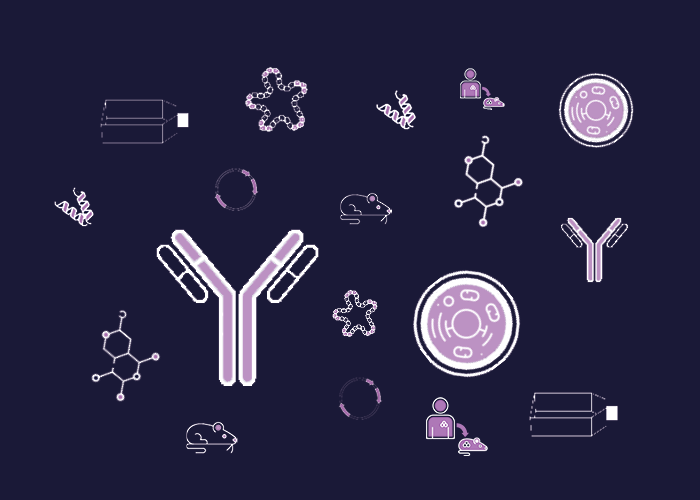
Cat. #151662
PKCepsilon Mouse
Cat. #: 151662
Sub-type: Mouse
Availability: 8-10 weeks
This fee is applicable only for non-profit organisations. If you are a for-profit organisation or a researcher working on commercially-sponsored academic research, you will need to contact our licensing team for a commercial use license.
Contributor
Inventor: Peter Parker
Institute: Cancer Research UK, London Research Institute: Lincoln's Inn Fields
Tool Details
*FOR RESEARCH USE ONLY (for other uses, please contact the licensing team)
- Tool name: PKCepsilon Mouse
- Research fields: Genetics;Immunology
- Tool sub type: Mouse
- Conditional: No
- Description: Investigating the biological role of PKCepsilon (e.g. required for macrophage activation and defence against bacterial infection, roles in cell division). Mouse line with a homozygous disruption of the PKCepsilon locus. PKCe-/- animals appear normal and are generally healthy, though the female mice frequently develop a bacterial infection of the uterus. Macrophages from the PKCe-/- mice demonstrate a severely attenuated response to LPS and IFNg. Mice have a significantly decreased survival when challenged iv with Gram -ve or +ve bacteria.
- Genetic background: A 9.3-kb EcoRI fragment containing the first exon of the PKCe gene was isolated from a murine 129/Sv genomic DNA library. A targeting vector was generated by introducing a positive selectable cassette into the PstI site of exon 1. This cassette contains stop codons in all three frames, an independent ribosomal entry site (IRES) followed by the LacZ gene with an SV40 polyadenylation sequence, and a neomycin phosphotransferase gene (MC1Neo poly(A). Correctly targeted GK129 ES cells were injected into C57BL/6 blastocysts. Chimeric mice were bred to C57BL/6 mice in specific pathogen-free (SPF) conditions to generate PKCe homozygous mutant animals. PKCe-/- and PKCe+/- mice were maintained on a mixed C57Bl/6 129/Sv genetic background and were genotyped by Southern blot or PCR analysis of tail DNA. Mice were fed ad libitum with a standard diet (Panlab) and kept under a light and dark cycle of 12 h (lights on at 8 a.m.).
- Zygosity: Homozygous
- Production details: A 9.3-kb EcoRI fragment containing the first exon of the PKCe gene was isolated from a murine 129/Sv genomic DNA library. A targeting vector was generated by introducing a positive selectable cassette into the PstI site of exon 1. This cassette contains stop codons in all three frames, an independent ribosomal entry site (IRES) followed by the LacZ gene with an SV40 polyadenylation sequence, and a neomycin phosphotransferase gene (MC1Neo poly(A). Correctly targeted GK129 ES cells were injected into C57BL/6 blastocysts. Chimeric mice were bred to C57BL/6 mice in specific pathogen-free (SPF) conditions to generate PKCe homozygous mutant animals. PKCe-/- and PKCe+/- mice were maintained on a mixed C57Bl/6 129/Sv genetic background and were genotyped by Southern blot or PCR analysis of tail DNA. Mice were fed ad libitum with a standard diet (Panlab) and kept under a light and dark cycle of 12 h (lights on at 8 a.m.).
Handling
- Shipping conditions: Embryo/Spermatoza- Dry Ice
Target Details
- Target: PKC epsilon
References
- Castrillo et al. 2001. J Exp Med. 194(9):1231-42. PMID: 11696589.
- Protein kinase Cepsilon is required for macrophage activation and defense against bacterial infection.


